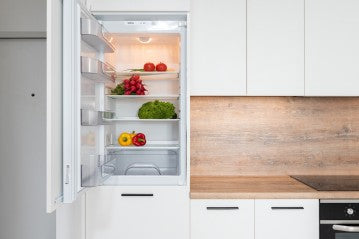
Solar energy has become increasingly popular in recent years as individuals and businesses seek sustainable and cost-effective alternatives to traditional electricity sources. Among the key components of a solar-powered system, solar batteries play a vital role in storing excess energy for later use. If you're considering integrating solar power into your home or business, understanding the lifespan of solar batteries is crucial, especially when it comes to powering essential appliances like refrigerators. In this article, we will delve into the details of solar battery systems and explore how long they can run a refrigerator efficiently.
The Basics of Solar Battery Systems
Before we dive into the specifics, let's briefly cover the fundamentals of solar battery systems. In a solar-powered setup, solar panels capture sunlight and convert it into electrical energy. This energy is then stored in solar batteries, which act as reservoirs, supplying power when sunlight is limited or during nighttime. Solar batteries come in various sizes and capacities, allowing you to tailor your system to meet your specific energy needs.
Estimating Power Consumption
To determine the suitable battery capacity for your refrigerator, it's essential to estimate its power consumption accurately. Refrigerators vary in terms of energy efficiency and power requirements. By referencing the refrigerator's user manual or specifications, you can find the average power consumption in kilowatt-hours (kWh) per day. This information will help you calculate the necessary battery capacity based on the desired backup duration and energy efficiency goals.
Factors Affecting Battery Run Time
Several factors influence the duration a solar battery can power a refrigerator. Firstly, the efficiency and output of your solar panels play a vital role in charging the battery effectively. Opting for high-efficiency panels will maximize the energy harvested from sunlight. Additionally, the availability of sunlight and the duration of charging time during the day impact the battery's capacity to store energy.
Inverter efficiency is another factor to consider. The inverter converts the direct current (DC) energy stored in the battery into alternating current (AC) that powers the refrigerator. Higher inverter efficiencies translate to less energy loss during conversion, enabling your battery to run the refrigerator for a longer time.
Temperature also affects battery performance. Solar batteries are sensitive to extreme temperatures, which can impact their charging and discharging capabilities. It's crucial to install your solar battery in a well-ventilated area and consider temperature management solutions to optimize performance.
Optimizing Battery Performance
To extend the lifespan of your solar battery and maximize its performance, several practices can be implemented. Firstly, energy-efficient refrigeration practices such as keeping the refrigerator door closed, minimizing frost buildup, and setting appropriate temperature levels can significantly reduce power consumption. Additionally, monitoring and managing battery charging cycles, ensuring regular maintenance, and proper care will help maintain the battery's efficiency and prolong its lifespan.
Case Studies and Real-Life Examples
Real-life examples and case studies serve as valuable references when considering solar-powered refrigerator setups. These success stories demonstrate the capabilities and benefits of solar battery systems. By highlighting actual battery lifespan and performance in different scenarios, you can gain practical insights and make informed decisions when selecting the right system for your needs.
Extending Battery Lifespan
To ensure the longevity of your solar battery, proper installation and positioning are crucial. Placing the battery in a cool and well-ventilated location will prevent excessive heat buildup and reduce strain on the system. Implementing optimal battery charging and discharging practices, such as avoiding deep discharges and excessive charging, will also contribute to extending the battery's lifespan. Moreover, having backup systems and surge protection in place adds an extra layer of security, safeguarding your investment.
Evaluating the Return on Investment
As you consider investing in a solar battery system for your refrigerator, evaluating the return on investment (ROI) is essential. Estimating the initial cost of the system, including solar panels, batteries, and installation, is crucial. Comparing the potential savings from using solar power versus conventional electricity over the lifespan of the battery will help you understand the long-term financial benefits. It's also important to consider the lifespan of the solar battery and any potential replacement costs down the line.
Future Trends and Innovations
The renewable energy landscape is constantly evolving, and advancements in solar battery technology continue to shape the industry. Innovations such as higher-capacity batteries, improved charging efficiencies, and integration with smart grid capabilities are becoming more prevalent. Stay informed about the latest trends and policies, as they can influence the adoption and availability of solar battery systems in your area.
Conclusion
Solar batteries have revolutionized the way we harness and store energy from the sun, providing an efficient and sustainable alternative for powering essential appliances like refrigerators. By understanding the lifespan of solar batteries and optimizing their performance, you can maximize efficiency and ensure long-term cost savings. Investing in a solar battery system not only benefits the environment but also offers a reliable and independent energy solution. So, take the leap into solar power and unlock the potential of a greener and more sustainable future.
Remember, when making any purchasing decisions, consult with reputable solar energy professionals to customize a system that meets your specific needs and requirements.
At Ecgsolax, we make some of the best solar batteries on the market, so whether you’re looking for lithium-ion batteries, AGM batteries, or gel batteries, we’ve got you covered.

0 comments